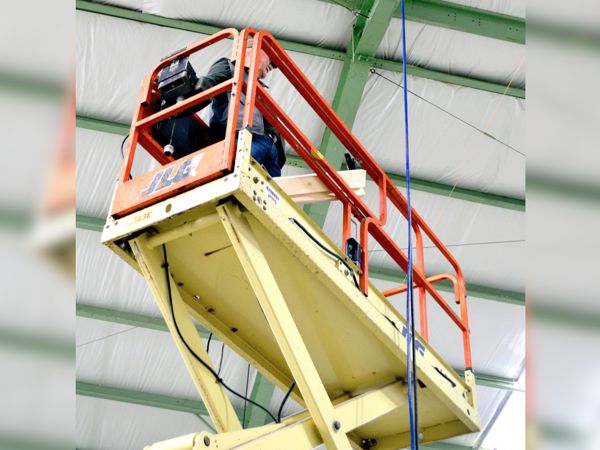Scissor lifts are versatile tools that allow workers to access elevated workspaces safely. Commonly used in sectors like construction, retail, and manufacturing, these lifts offer a stable platform for performing various tasks. Unlike aerial work platforms, which use telescoping arms to extend the platform, scissor lifts rely on crisscrossing beams to elevate the work area vertically.
Given their design, many scissor lifts fall under OSHA’s Scaffolding standards. While generally reliable, scissor lifts pose certain risks, such as falls from the platform and tipping over. Collapses of the cross beams are rare, provided operators adhere to the manufacturer’s guidelines and maintain the equipment regularly.
Today’s leading scissor lift brands include JLG and Terex's Genie.
Scissor lifts are essentially mobile scaffolds designed to reach heights between 25 to 50 feet. Platforms are typically 24 to 36 inches deep and 48 to 72 inches wide, capable of supporting one to four people depending on weight and lift capacity. Each model has specific parameters regarding maximum height and load capacity, so it’s crucial to review these details before use.
The control panel is usually located either at the base or on the platform itself. Moving the lift while extended might seem convenient, but it introduces additional risks. Many manufacturers advise against doing this.
Source: OSHA
Before starting any task, it’s essential to assess the work site and identify all potential hazards to choose the right equipment. Operators need to evaluate and implement controls addressing fall protection, stability, and positioning. Only trained personnel should operate scissor lifts.
Guardrails must be installed on scissor lifts to prevent falls. Most manufacturers incorporate top and mid-rails along the platform’s perimeter. These rails can be used to attach lanyards and harnesses. Some models with extendable platforms may have rope-based rail sections—extra care is required around these areas.
Notes: Falling from the scissor lift platform is a serious risk. Standing on the guardrails is dangerous. To enhance safety, consider attaching a body harness to the railing.
Operators should confirm that the scissor lift is stable and won’t tip over or collapse. Check the floor to ensure it’s level and solid. Most scissor lifts require a flat surface, but some rough-terrain models can handle uneven ground.
Notes: Scissor lifts can tip over if hit at the base by moving objects or if they encounter obstacles while elevated.
Operators should position the lift carefully to avoid crushing and electrocution risks. Crushing can happen if the lift moves and traps someone against an object. Electrocution can occur if the lift comes too close to electrical lines.
Be aware of arc flash hazards as well. Electricity can jump from power lines to the lift or worker, causing electrocution even without direct contact.
Notes: Scissor lift operators must exercise caution when raising or lowering the platform and maneuvering the lift.
#Material Handling
#Construction
#Toolbox Talks
#Scissor Lifts
Equipment For Plant Protection Equipment For Plant Protection,Equipment For Plant Protection,Plant Protection Machinery,Plant Protection Equipment In Farm Machinery Gongzhuling Huaxi Agricultural Machinery Manufacturing Co.LTD , https://www.hxzbjx.com
Notes: Scissor lifts derive their name from the crisscrossing beams, or "scissors," that raise and lower the platform.
General Safety Measures
Fall Protection
Stabilization
Scissor lifts can tip over if used on an uneven surface, struck by a moving object, or maneuvered while extended and hitting obstacles like trees.
Positioning
Group Discussion Topics
Find Similar Articles By Topic